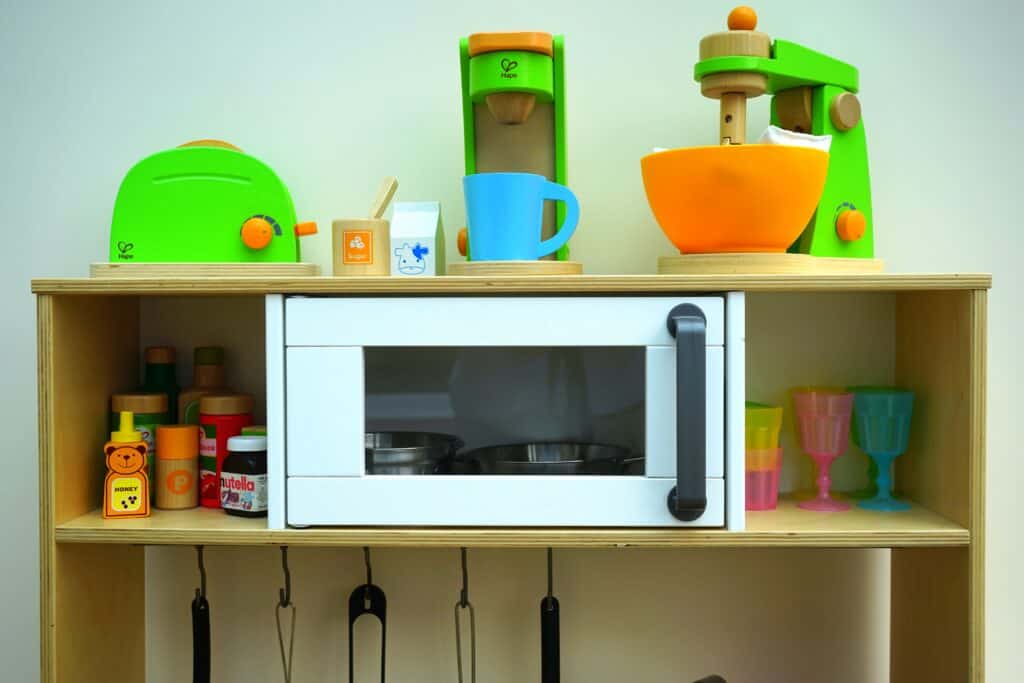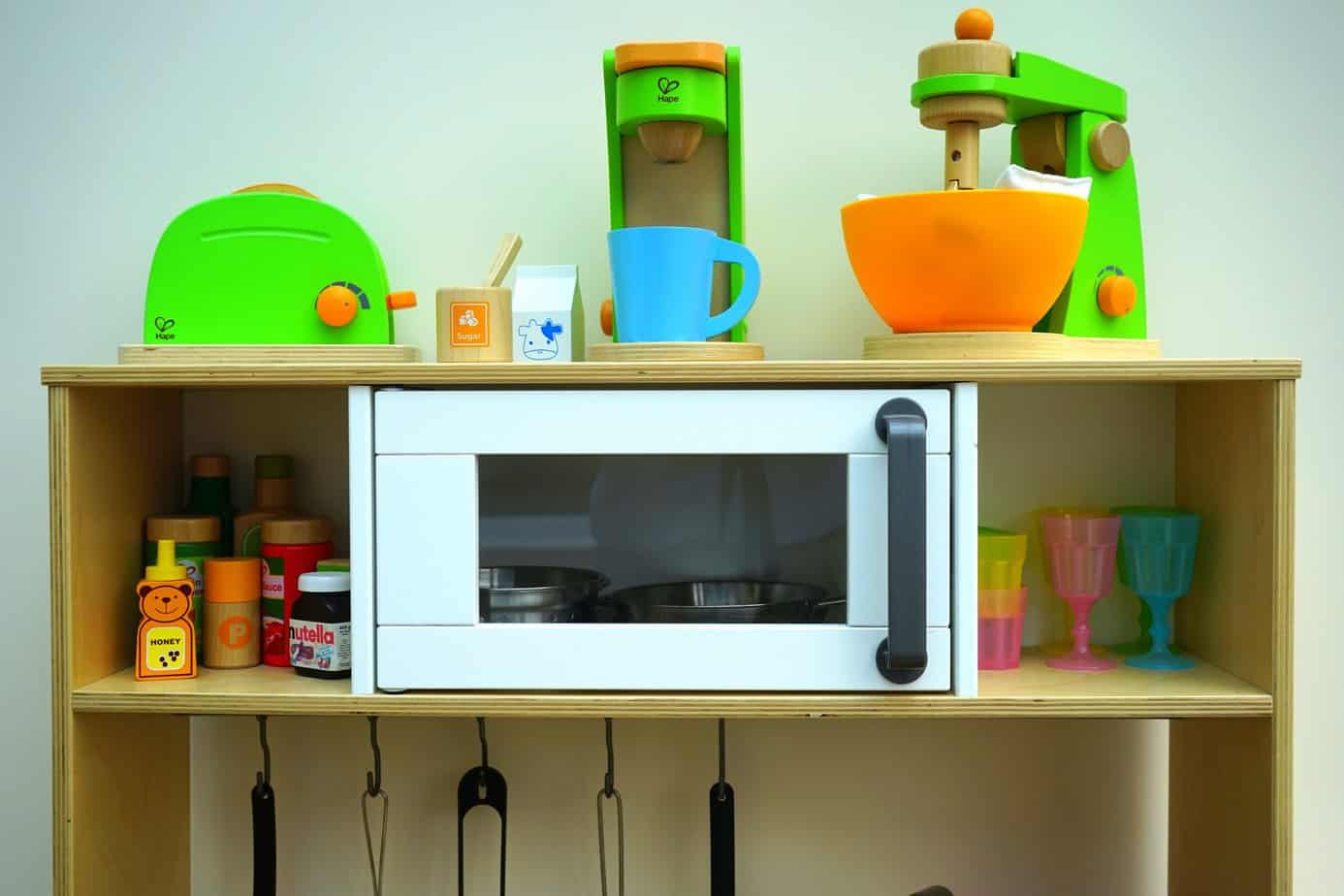How to Defrost in Microwave? To defrost in a microwave, place the food in a microwave-safe container and cover it loosely. Use the microwave’s defrost function or set it to a low power level (30-50%) to prevent cooking the edges while the center remains frozen. Defrost for short intervals, typically 1-2 minutes, and check the food frequently, flipping or stirring it to ensure even thawing.
Defrosting foods in microwave can be easily achieved by utilizing the defrost functionality. This article aims to provide complete information the process of how to defrost in microwave, providing you with essential tips to ensure safe, quick, and even defrosting. We’ll cover the basics of setting your microwave correctly to avoid partially cooked edges or icy centers and share specific techniques for different types of food, including meats, poultry, fish, and vegetables.
Safety is a key focus, with advice on how to prevent foodborne illness by following best practices for microwave thawing. Additionally, we’ll address common challenges such as uneven defrosting and offer solutions to help you overcome these obstacles. By the end of this guide, you’ll be equipped with practical knowledge to make microwave defrosting a convenient part of your meal prep, ensuring your food is thawed properly every time.

Understanding Microwave Defrosting
Microwave defrosting is a technique that leverages microwave technology to thaw or defrost frozen food quickly and efficiently. Unlike traditional methods that can take hours, microwave defrosting reduces thawing time to minutes, making it an invaluable tool for busy individuals. This section aims to educate readers on the principles of microwave defrosting and how to utilize it effectively.
How Microwave Defrosting Works
Microwaves defrost food by emitting electromagnetic waves that stimulate water molecules in the food, generating heat and thereby thawing the frozen item. This process is quick and efficient but requires an understanding of the right settings to prevent partially cooking the food while defrosting.
- Power Level: Typically, a lower power setting (usually 35-40% of the full power) is recommended for defrosting to ensure even thawing.
- Time: Thawing time depends on the type and weight of the food. Most microwaves come with an auto-defrost option where you enter the weight, and the microwave calculates the time.
Key Considerations for Effective Microwave Defrosting
Understanding the nuances of microwave defrosting is crucial for achieving the best results without compromising food safety or quality.
- Uniformity: To promote even thawing, rearrange or flip the food halfway through the defrosting process.
- Size and Shape: Smaller, uniformly shaped items defrost more evenly. Consider cutting larger items into smaller pieces before freezing.
Recommended Defrosting Settings in Microwave
| Food Type | Power Level (%) | Approximate Time (per lb) |
|---|---|---|
| Poultry | 30-40 | 8-10 minutes |
| Meat | 30-50 | 8-12 minutes |
| Fish | 30-40 | 6-8 minutes |
| Vegetables | 30-40 | 5-7 minutes |
By applying the defrosting process to the specific type of food and following these guidelines, you can ensure that your food is thawed safely and ready for cooking. This knowledge not only enhances the convenience of microwave defrosting but also preserves the nutritional quality of your meals.
List of Microwave Brands With Defrost Settings
Here’s a list of microwave brands and models known for their defrost settings and overall performance.
- Panasonic NN-SN686S
- Stainless Steel Microwave with Inverter Technology and Genius Sensor for smart cooking and defrosting. (Panasonic Microwave Appliances)
- Samsung MS14K6000AS
- A countertop microwave that features an auto defrost setting and a variety of preset cooking options. (Samsung Microwave Appliances)
- LG LMV2031ST
- Over-the-Range Microwave with Sensor Cooking and an efficient defrost function that automatically adjusts power and time based on the type of food. (LG Microwave appliances)
- Toshiba EM131A5C-BS
- Microwave Oven with Smart Sensor, Easy Clean Interior, and ECO Mode, including a custom defrost function.
- GE JES1072SHSS
- Countertop Microwave Oven with Auto and Time Defrost settings, offering flexibility in thawing foods.
- Sharp ZSMC1132CS
- Carousel Countertop Microwave Oven with a convenient “+30 Sec” key for instant start, and auto defrost for quick and precise thawing.
- Whirlpool WMH31017HS
- Over-the-Range Microwave with various power levels, including a defrost setting designed to thaw food quickly and evenly.
- Breville BMO850BSS
- The Smooth Wave Microwave with Soft Close and Power Smoothing Inverter technology, including a smart defrost setting to gently and evenly defrost without cooking the edges of the food.
- Frigidaire FFMV1645TS
- Over-the-Range Microwave with Multi-Stage Cooking option, allowing you to program power levels and cooking times in advance, including defrosting.
- KitchenAid KMHS120ESS
- Stainless Steel Over-the-Range Microwave with sensor steam/simmer cook cycle, a defrost function, and Keep Warm feature.
When choosing a microwave, consider the size, power, features, and user reviews to ensure it meets your needs, especially regarding its defrost capabilities.
The Importance of Microwave Settings
Properly setting your microwave is pivotal for defrosting food effectively and safely. This section delves into how leveraging the right microwave settings can make a significant difference in the quality of your thawed food, ensuring it’s evenly defrosted without starting to cook on the edges.
How to Defrost in Microwave By Choosing the Right Power Level
The power level you select on your microwave directly impacts how evenly and safely your food is defrosted. Using too high a power setting can lead to uneven defrosting, where the edges start cooking while the center remains frozen. Understanding your microwave’s power settings is crucial for optimal defrosting performance.
- Adapt Based on Food Type: Different foods defrost best at slightly different power levels. Refer to your microwave’s manual for specific recommendations.
Adjusting Time for Perfect Defrosting
The time required for defrosting varies based on the food’s weight and density. Adjusting the defrosting time is essential to prevent partial cooking and ensure the food is ready for cooking.
- Use the Defrost Function: Many microwaves come with a defrost function that automatically adjusts the time based on the food’s weight. This feature is invaluable for achieving perfect defrosting results.
- Manual Time Adjustment: If manually setting the time, start with shorter intervals, checking the food’s progress and flipping or rotating as necessary.
General Guidelines for Adjusting Microwave Settings
- Check Regularly: Monitor the food’s progress periodically to adjust settings.
- Rotate or Stir: For even defrosting, rotate or stir the food halfway through the process.
Understanding and correctly adjusting your microwave settings are crucial steps in the defrosting process. By following these guidelines, you can ensure that your food is thawed evenly and safely, ready for your next culinary creation.
Step-by-Step Guide to Defrosting Different Foods
Different types of food require specific defrosting approaches to ensure they’re thawed evenly and safely, preserving their texture and taste. This section provides a detailed guide on how to defrost various food groups in the microwave, from meats and poultry to fish and vegetables, ensuring you get the best results every time.
Defrosting Meats and Poultry
Meats and poultry are staple ingredients in many diets, and defrosting them properly is key to preserving their quality and safety. The density and size of the meat play a significant role in determining the defrosting time and settings.
- Chicken: Place the chicken on a microwave-safe dish and cover it with a lid or microwave-safe plastic wrap. Set the microwave to the defrost setting or 30% power. For every pound of chicken, defrost for approximately 8-10 minutes, flipping halfway through. Read more on how to defrost chicken.
- Beef/Lamb: Follow a similar process to chicken, adjusting the defrosting time to 8-12 minutes per pound, depending on the thickness and cut of the meat. Read more on how to defrost beef.
Defrosting Fish and Vegetables
Fish and vegetables are more delicate and require careful attention to prevent over-defrosting, which can affect their texture and nutritional value.
- Fish: Place the fish on a microwave-safe dish, lightly covered. Use the defrost setting or 30% power for 6-8 minutes per pound, checking frequently as fish defrosts quickly. Read more on how to defrost fish.
- Vegetables: Spread the vegetables in a single layer on a dish and defrost for 5-7 minutes per pound at 30% power, stirring or rearranging halfway through for even defrosting. Read more on how to defrost vegetables.
Microwave Defrosting Times by Food Type
| Food Type | Power Level (%) | Defrosting Time (per lb) |
|---|---|---|
| Chicken | 30 | 8-10 minutes |
| Beef/Lamb | 30-50 | 8-12 minutes |
| Fish | 30 | 6-8 minutes |
| Vegetables | 30 | 5-7 minutes |
Remember, these times are approximate, and factors such as the initial freezing state and the microwave’s wattage can affect the actual defrosting time.
Tips for Safe Microwave Defrosting
Ensuring food safety during the microwave defrosting process is paramount. This section aims to guide you through essential safety tips to prevent foodborne illness and ensure that your defrosted food is as healthy and safe to eat as when it was fresh. By adhering to these practices, you can minimize the risk of bacteria growth and ensure your food retains its quality throughout the defrosting process.
Food safety begins with understanding the right defrosting techniques and the potential risks associated with improper thawing. Here are critical practices to keep in mind:
- Avoid Room Temperature Thawing: Never defrost food at room temperature, as it can become a breeding ground for bacteria. Always use the microwave defrost setting or cold water if you’re not in a hurry.
- Cook Immediately After Defrosting: To minimize the risk of bacterial growth, cook microwave-defrosted food immediately after thawing.
Cross-contamination is another concern when defrosting in the microwave. Ensure that juices from defrosting meats and poultry do not drip onto other foods or surfaces.
- Use a Clean Microwave-Safe Dish: Place the food on a clean dish or plate specifically designed for microwave use to catch any drips.
- Cover Food During Defrosting: Lightly cover the food with a microwave-safe lid or vented plastic wrap to avoid splatter and further reduce the risk of contamination.
Safe Microwave Defrosting Tips
- Check Your Microwave’s Manual: For specific defrosting instructions and safety features.
- Defrost in Short Intervals: To check the progress and prevent parts of the food from starting to cook.
- Rearrange or Flip Halfway: For even thawing and to reduce cold spots where bacteria can thrive.
- Use the Food Immediately: Defrosted food should go straight to cooking to ensure safety.
By implementing these safety measures during the microwave defrosting process, you can ensure that your food is not only thawed efficiently but also remains safe for consumption. Keeping these tips in mind will help maintain the integrity of your meals and safeguard the health of those enjoying them.
Troubleshooting Common Defrosting Challenges
Even with the best practices, you might encounter some hurdles while defrosting food in the microwave. This section is dedicated to identifying common defrosting challenges and offering practical solutions to overcome them, ensuring your food thaws evenly and safely every time.
Uneven thawing is a frequent issue many face while defrosting in the microwave, where parts of the food might start cooking while others remain frozen. Understanding the causes and how to address them can make all the difference.
Preventing Partial Cooking
Partial cooking during defrosting not only affects the texture and taste of the food but can also pose food safety risks.
- Defrost in Stages: Defrost the food in stages, checking periodically for any signs of cooking. If the edges start to cook, let the food rest for a minute or two before continuing.
Strategies for Troubleshooting Defrosting Issues
- Check for Hotspots: Identify if your microwave has specific areas that heat more intensely and position food accordingly.
- Thaw in Shorter Intervals: Defrost for a few minutes, check, and then continue if needed to prevent overheating certain sections.
- Use Microwave-Safe Covers: Covering food can help distribute the heat more evenly, reducing hotspots.
By being proactive and employing these troubleshooting strategies, you can address the common challenges associated with microwave defrosting. This knowledge ensures that your defrosting process is not only efficient but also preserves the quality and safety of your food, making meal preparation smoother and more enjoyable.
In conclusion, mastering the art of microwave defrosting is an invaluable skill that can significantly enhance your culinary practices. Starting with a solid understanding of microwave defrosting, we’ve explored the critical importance of adjusting microwave settings for optimal results, guiding you through the nuances of defrosting various food types with precision.
We’ve emphasized the significance of safety measures to prevent foodborne illnesses and ensure that your food retains its quality and nutritional value. Troubleshooting common challenges has equipped you with the knowledge to overcome potential hurdles, making the defrosting process smoother and more reliable.
By applying the insights from each section, you’re now well-prepared to defrost foods efficiently, safely, and evenly, ensuring that every meal preparation starts on the right foot. The benefits of implementing these tips are clear: reduced preparation time, enhanced food safety, and preserved food quality, allowing you to enjoy delicious and nutritious meals without the wait.
We encourage you to take action on what you’ve learned. Begin by experimenting with different power settings and defrosting times based on the type of food you’re thawing.
Also its important that you should know how to defrost in an air fryer.z
Also here are some best ways to defrost frozen foods.
To defrost in a microwave without a defrost button, use a lower power setting (30-50% of full power) and set the time manually, typically 7-8 minutes per pound for meat. Check and flip the food halfway through to ensure even thawing. Adjust time based on the food’s weight and type.
How long to defrost in microwave?
Defrosting time in a microwave varies by food type and weight. Defrosting times in a microwave vary: chicken breasts and steaks usually require 8-10 minutes per pound, while ground meat needs about 7-8 minutes per pound. Pork chops also thaw within 8-10 minutes per pound. Fish fillets take shorter, about 6-8 minutes per pound. For quick defrosting, bread takes 1-2 minutes for a loaf and 15-30 seconds for slices, frozen vegetables 4-6 minutes per pound, and a stick of butter 1-2 minutes.
The defrost button on a microwave is typically found on the control panel, often labeled as “Defrost” or represented by a symbol resembling a snowflake or a piece of meat with droplets. The exact location and labeling can vary between models, so check your microwave’s manual if you’re having trouble locating it.





